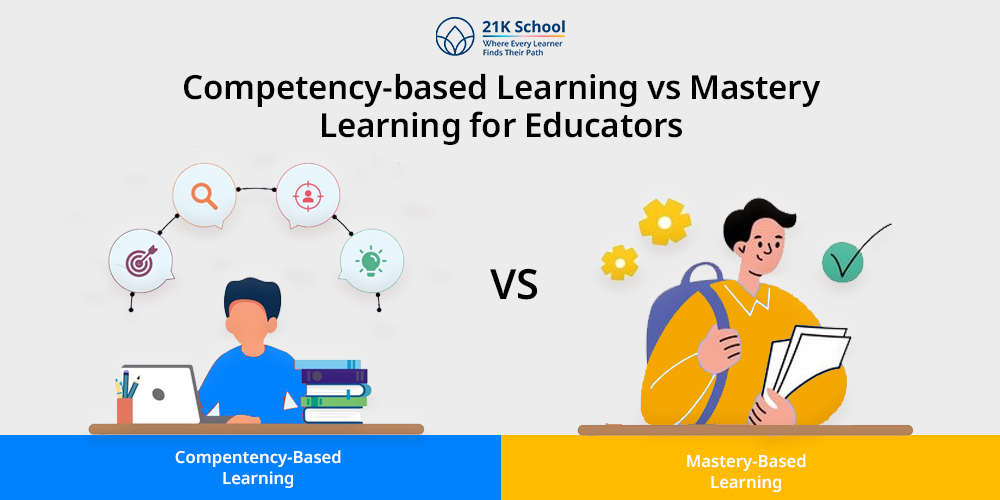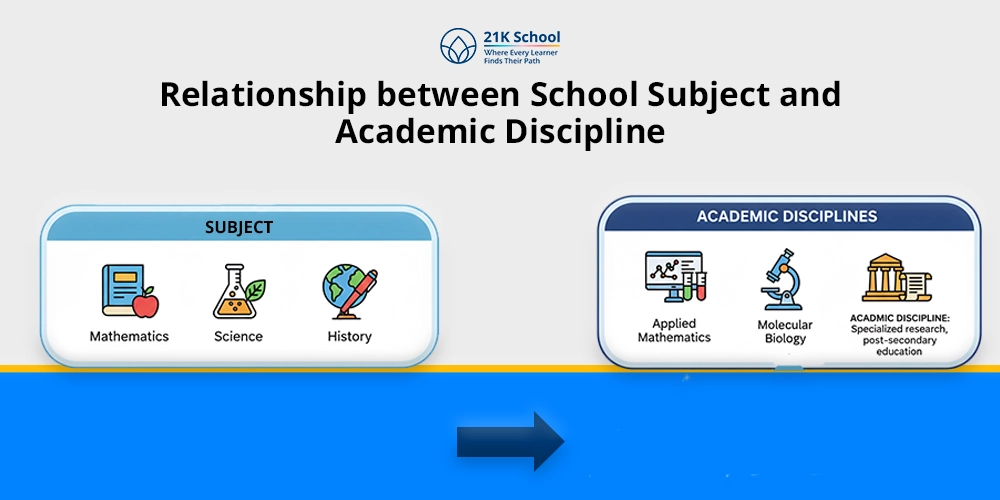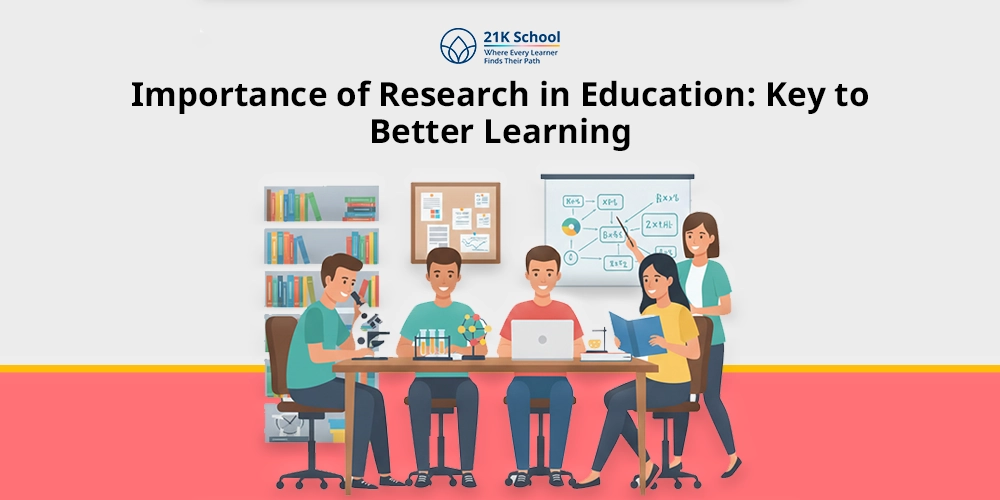
The sphere of education of modern times is becoming marked by the increased interest in individual initiatives. And now it is not, anything like that old and repetitive, rote learning.
To ensure this shift, education systems have come up with two good models. These are Competency-based Learning and Mastery Learning, and will help in improving the performance of students.
They can be comparable in student-centered learning approach yet will be applied, intended and oriented towards learning differently.
Let’s dive in, the paper will continue to discuss the two approaches and compare their key peculiarities, advantages, and limitations.
Table of Contents
- What is Competency-Based Learning?
- Key Aspects of Competency-Based Learning
- What is Mastery Learning?
- Main Aspects of Mastery Learning
- Competency-Based Learning vs Mastery Learning: Major Differences
- Advantages of Competency-Based Learning
- Advantages of Mastery Learning
- Things to Consider with Competency-Based Learning and Mastery Learning
- Concluding Thoughts
What is Competency-Based Learning?
Competency-based Learning is a type/mode of learning. Here emphasis is put on ensuring that the students have acquired certain skills or competencies before being advanced to the next level.
In a competency-based learning system, learners will progress, irrespective of the time consumed. Other than that, they are more attentive in the class or undertaking a given quota of work.
Such students would not be like in a traditional schooling system hence would advance that way.
The paradigm lays a lot of stress on applied facilities and results. The learners can learn at their leisure. Thus they can get individualized learning activities according to their strengths and weaknesses.
Key Aspects of Competency-Based Learning
Competency-based learning is one that is outcome-centered and directly promotes real world applications. It is composed of some pillars which it is based on. And these need to be kept regularly in such classes.
1. Individualized Learning Rate
In competency based learning, the students can learn at their own pace and it is the competent achievers who are competing.
This removes the traditional education system where all the students are to attain the same level of growth.
2. Pre-eminence of Certain Skills
Competency-based learning boils down to knowing some competencies. Before doing anything further, students are expected to exhibit mastery and awareness of skill.
3. Mastery-based Assessment is frequent
Common in the competency based systems are frequent assessments to ascertain whether a student has mastered a specific competency or not.
Mostly, the tests may be formative, and students are provided with a chance to demonstrate their skills many times.
4. Student-Centred Approach
Students usually have a choice on how to attain the competencies in competency-based learning conditions. This is an alternative to other learning methods and preferences.
5. Emphasis on Real-world Outcomes
Results of competency based learning are outcome oriented, concrete, practical and measurable. These are attributed to life skills and not a student graduating out of curriculum.
What is Mastery Learning?
Mastery Learning is a teaching methodology trying to ensure that students have a loftier status in their lesson or topic when it is done.
As opposed to the traditional ones, it is whereby learners are discovered to have mastered a concept when they are good to go.
And in case a student does not learn the concept, he/she gets time and even material to learn it either during remedial lessons or one-on-one tutoring.
Mastery Learning is one that concerns him greatly as no student can move on without mastering a subject or technique.
Explore How Online Schools Are Facilitating Mastery Learning?
Main Aspects of Mastery Learning
Mastery learning refers to a teaching method that emphasizes on learning basic knowledge that is at a large scale. It is basically arranged into broad elements that purportedly serve to enable all learners to attain perfection.
1. Pre-assessment
A pre-assessment is given to the students beforehand, so that the prior knowledge and preparation level can be realized. This helps the teacher to be able to differentiate an instruction and find out learning gaps at early ages.
2. Group-based Initial Instruction
Initial instruction in a group entails well-planned lessons to the students and teachers teach subjects to an entire group. This enables everybody to have some common ground.
3. Formative Assessments
Formative assessment tools are used right after the introduction of first-instruction gives an idea of the understanding levels in students. They are non-stressful and they are to inform the teachers and the students of an improvement.
4. Corrective Instruction
The introduction of corrective instruction comes into place when students do not concisely pass the formative assessment. They are given clear, distinctive directions which can fill the broad gaps or misunderstandings.
5. Parallel Formative Assessment
Almost identical is parallel formative assessment. The students are however not assessed the same way after the remedial instruction. This will ensure that they have already acquired the concept.
6. Enrichment Activities
Skilled students will be provided with the possibility of enrichment classes to handle more progress. Such practices make them more knowledgeable and away out there when the rest are still taking long to master.
7. Summative Assessments
A final test is done after each student has been given ample opportunity to master the subject. The goals of the summative assessment are to give the summary of the work done and the readiness to the next unit.
Competency-Based Learning vs Mastery Learning: Major Differences
The competency-based learning and mastery approaches are designed so that every student reaches a suitable level of competence and is able to proceed to novel learning. But they differ in learning progress, learning pace and assessment.
Competency-based learning is made and aligned to particular abilities whereas mastery learning is made to master content within a particular time frame.
| Aspect | Competency-based Learning | Mastery Learning |
| Pacing | Self-paced; progress when competencies are mastered. | Fixed pacing; progress only after mastering individual topics. |
| Focus | Competencies or skills across a subject or program | Mastery of specific concepts or content |
| Assessment | Holistic, performance-based, competency-focused | Graded tests, quizzes, and assessments for each concept |
| Teacher Role | Facilitator; guides individualized learning paths. | Instructor; provides support to ensure mastery. |
| Flexibility | High flexibility in learning pathways and pacing. | Flexible within a set timeframe for mastering topics. |
| Progression | Move on after mastering a broader competency set | Move on after mastering each individual concept |
1. Pacing
- Competency-based Learning: Pace is determined by a student’s capability. Promotion will be based on the mastering of competencies and not time. Students are able to fast-track the topics which they have familiarity with.
- Mastery Learning: The teacher controls the time so that they can have fixed schedules. The students will proceed to the next when they have mastered a topic. It has time to remediate in case they do not sort out something on their first try.
2. Focus
- Competency-based Learning: It focuses on achievement of definite competency or practical competences. Skills are concrete and narrowed down. Emphasize more on development of skills in various subjects and that they are career oriented.
- Mastery Learning: It is content centred and what follows it is mastery and then knowledge. It is all about achieving skillfulness in some academic subjects/units. More school based rather than job related skills.
3. Flexibility
- Competency-based Learning: The most flexible programs when it comes to paths and pace. Students will choose the way of learning competencies.
- Mastery Learning: This is only flexible in remediation context in case of stipulated period. Students are catered to by having enough time that they are to absorb content. The flow is controlled but can be expanded in case there is a need.
4. Progression
- Competency-based learning: The promotion will be based on individual capability to differentiate a series of skills. Students are not under a timeline or they do not have any deadline in which they have to finish the units. No time-pressure-students take their time until they are ready.
- Mastery Learning: Once a learner has mastered knowledge, they advance. The greatest concern is that schools do not promote a single student until he/she has mastered. There is structure and tendency of remediation time to be time-bound.
Advantages of Competency-Based Learning
In order to take specification into use in your classrooms, you must encounter the benefits of competency learning. Such advantages help this mode of learning to be out of the crowd.
- Personalized Learning: Competency-based learning ensures that students have an opportunity to learn at their own pace. Therefore fulfils the needs of personalized learning and the differences in competence.
- Greater Learning and Use: The students will learn to apply their abilities in the field since they will be required to demonstrate that they have acquired practical skills. Students are not pressured into attaining theoretical knowledge and points and the students are good at this.
- Gives Students Motivation: Competency-based learning gives the students the liberty to control and influence their learning and therefore their heightened interest in the classroom. Individual development and at (their) pace of learning to acquire skills triggers the students to learn better and new.
- Skill Development Specialization: The aim of competency-based education is to develop both transferrable skills and skills that capture real life and make a student career ready. The importance of skill-development in school education, owes to such a form of learning.
Advantages of Mastery Learning
There are numerous benefits to mastery learning in terms of the prowess of the student and life-long learning. It involves good learners not grades.
- Promises Mastery of Basics: Mastery Learning involves a complex technique of enhancement of skill and knowledge. The students are not permitted to reach a higher level of skills.
- Supports Equity in Education: Mastery learning plays into educational equity because it provides reinforcement to those students who need it. And, therefore, enhances equal education.
- Improves Long Term Memory: Mastery was the focus so students would be better placed to retain and reuse knowledge in the learning process or life.
- Develops Student Confidence: The teacher becomes an expert and encourages the development of confidence in children. Besides that the self confidence that one would develop, it could provide favorable attitudes towards learning and motivate the learner.
Things to Consider with Competency-Based Learning and Mastery Learning
As much as Competency-based and mastery Learning system have many advantages, predispositions exist that are associated with the two measures:
- Time and Resource intensive: The two are time and resource intensive as they require much time to concentrate on the individuals and constant evaluation. More resources may also be needed by the teachers to support the students on different levels.
- Standardization Problems: In either design, formulation of clear and coherent mastery objectives, and competency requirements, may be difficult. The discrepancy in the definition and mastery assessment can be inter-classroom or inter-school.
- Teacher Training: Competency-based learning and mastery training require a high level of expertise in separation of instructions and individual feedback on the part of the teacher. Achieving the implementation process requires adequate professional development resources of teachers.
- Student Motivation: Mastery learning and competency-based learning can be intrinsically motivating and other students may have deadline issues. Such time limits in the high level sense create inhibitions so far as they fail to come up with a program or time frame on how to approach things.
Concluding Thoughts
Competency Based Learning and Mastery learning are also very appealing alternatives to the current models of learning. On their account students are being lined up to absorb one thing after another.
With that said, both sides have good and bad arguments. They however do not wish to make the students gain mastership, but to leave their time in the classroom.
However, they are useful when there is planning, access to the needed resources, and teachers are trained to use them regularly.
The integration of these models in the current education system in India can transform its success pattern.


